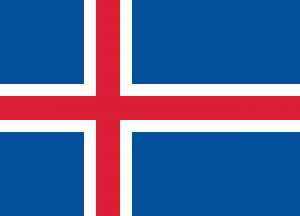Difference between revisions of "Language/Icelandic/Grammar/Plurals"
m (Quick edit) |
m (Quick edit) |
||
| Line 32: | Line 32: | ||
<hr>If you have any questions, please ask them in the comments section below.<br>Feel free to edit this wiki page if you think it can be improved. 😎 | <hr>If you have any questions, please ask them in the comments section below.<br>Feel free to edit this wiki page if you think it can be improved. 😎 | ||
==Videos== | |||
===The Icelandic Happy Birthday Song [EP.39] - YouTube=== | |||
<youtube>https://www.youtube.com/watch?v=CuHZgfbrXW8</youtube> | |||
{{Icelandic-Page-Bottom}} | {{Icelandic-Page-Bottom}} | ||
Revision as of 15:47, 22 February 2023
Hi Icelandic learners!😊
Learning Icelandic Grammar can be a daunting task, but with the right approach and dedication, you can master it in no time!
Plural Forms
In Icelandic, nouns have two plural forms: the weak plural and the strong plural. The weak plural is used for most nouns, while the strong plural is used for a few nouns that refer to people or animals.
Weak Plural
The weak plural is formed by adding -ar to the end of the noun. For example, the word maður (man) becomes menn (men) in the weak plural form.
Strong Plural
The strong plural is formed by adding -ir to the end of the noun. For example, the word maður (man) becomes mennir (men) in the strong plural form.
Irregular Plurals
There are some nouns that have irregular plural forms. For example, the word barn (child) becomes börn (children) in the plural form.
Plural Agreement
In Icelandic, adjectives and verbs must agree with the nouns they modify in terms of number. This means that if the noun is in the plural form, then the adjective or verb must also be in the plural form.
For example, the sentence Ég sé maðurinn (I see the man) would become Ég sé mennina (I see the men) if the noun maður (man) was changed to its plural form menn (men).
Conclusion
In this lesson, we have learned about the two plural forms in Icelandic and how adjectives and verbs must agree with the nouns they modify in terms of number. With practice and dedication, you will soon be able to use these forms correctly in your own sentences.
If you have any questions, please ask them in the comments section below.
Feel free to edit this wiki page if you think it can be improved. 😎
Videos
The Icelandic Happy Birthday Song [EP.39] - YouTube
